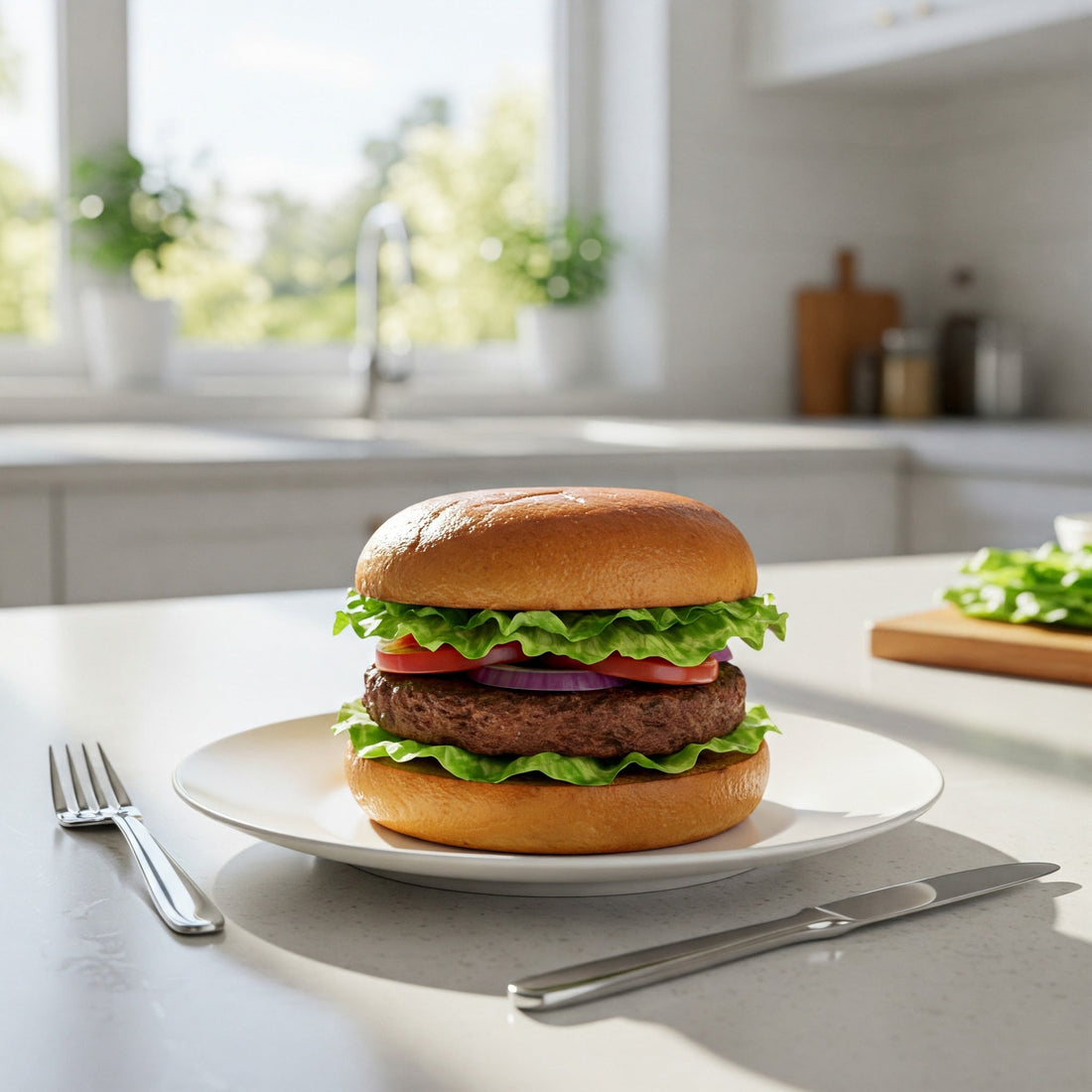
Psyllium Husk & Powder in Meat Processing
Share
Psyllium husk and psyllium husk powder, derived from Plantago ovata, have long been recognized for their health benefits, particularly in digestive health. However, the meat and food processing industry is now leveraging psyllium’s binding, water retention, and texturizing properties to improve product quality in processed meats (chicken, lamb, beef) and plant-based alternatives.
This blog explores how psyllium enhances texture, juiciness, fat reduction, and stability in meat processing while boosting fiber content and improving shelf life.
Why Psyllium Husk is Valuable in Meat Processing
Key Functional Properties of Psyllium in Meat & Food Processing
Psyllium’s soluble fiber forms a gel when mixed with water, making it an excellent binder and stabilizer in processed meats. This improves texture, moisture retention, and stability, creating a superior final product.
| Psyllium Functional Property | Benefit in Meat Processing |
|---|---|
| Water-Binding Capacity | Retains moisture, reducing cooking loss and enhancing juiciness. |
| Gel-Forming Ability | Helps hold ingredients together, improving texture and bite. |
| Fat Mimetic & Replacement | Replaces some fat while maintaining mouthfeel, reducing calories. |
| Emulsification & Stability | Prevents water-fat separation in emulsified products (sausages, nuggets). |
| Freeze-Thaw Stability | Reduces moisture loss in frozen products, preserving texture. |
| Fiber Enrichment | Boosts dietary fiber content, adding health benefits. |
Scientific studies have demonstrated psyllium’s effectiveness in improving water retention, fat replacement, and textural quality in processed meats.
Psyllium as a Meat Binder in Chicken, Lamb & Beef
One of psyllium’s most valuable applications is as a binding agent in processed meats. By holding water and fat together in a stable matrix, psyllium improves firmness, sliceability, and juiciness in ground meat formulations.
How Psyllium Improves Processed Meat Quality
- Chicken Patties & Nuggets: Psyllium increases fiber content while reducing cholesterol in chicken patties. It also extends refrigerated shelf life by improving moisture retention.
- Lamb & Beef Products: Studies show that 3% psyllium husk powder enhances gel formation in lamb meat, even in low-salt formulations. In beef patties, psyllium prevents drying and shrinkage, improving cooking yield.
- Sausages & Kebabs: Psyllium improves binding and emulsion stability, ensuring a firmer, juicier texture in processed sausages.
Psyllium in Plant-Based Meats: A Natural Texturizer
As plant-based meat alternatives gain popularity, psyllium is emerging as a key ingredient due to its binding and moisture-retention properties. It enhances:
- Water retention: Keeps plant-based meats juicy and prevents dryness.
- Fibrous texture: Mimics the mouthfeel of real meat.
- Emulsion stability: Ensures uniform consistency in vegan burgers, sausages, and nuggets.
💡 Fact: Leading brands like Beyond Meat include psyllium fiber in their plant-based sausages.
Table: Psyllium’s Role in Meat vs. Plant-Based Meats
| Application | Meat Products | Plant-Based Meats |
|---|---|---|
| Binding | Improves firmness in sausages, patties, and kebabs. | Holds plant proteins together, preventing crumbling. |
| Moisture Retention | Reduces cooking loss, enhancing juiciness. | Prevents dryness and keeps products succulent. |
| Emulsification | Stabilizes fat-water mixtures in emulsified meats. | Enhances oil-water integration in plant protein formulations. |
| Fat Replacement | Reduces fat while maintaining texture. | Replaces fat in vegan meats, keeping them juicy. |
Health & Nutritional Benefits of Psyllium in Meat Processing
Incorporating psyllium into meat formulations not only enhances texture but also improves nutritional value.
Nutritional Advantages of Psyllium-Enriched Meat
✅ Boosts Dietary Fiber Intake: Meat is naturally low in fiber, but adding psyllium increases fiber content, promoting gut health.
✅ Reduces Fat & Cholesterol: By partially replacing fat, psyllium helps create lower-fat, heart-healthier meats.
✅ Improves Satiety & Digestion: Psyllium’s fiber slows digestion, leading to better appetite control and improved glycemic response.
✅ Lowers LDL Cholesterol: Scientific studies confirm that psyllium lowers bad cholesterol (LDL) while supporting heart health.
🔬 Scientific Evidence: A study replacing 15% of beef fat with psyllium gel found significantly lower fat and oxidation levels without compromising sensory quality.
Market Trends: Why the Industry is Embracing Psyllium
As health-conscious consumers demand high-fiber, clean-label foods, psyllium is being widely adopted in both traditional meat and plant-based categories.
Key Industry Trends Driving Psyllium Adoption
📌 Fat & Calorie Reduction: Psyllium allows for healthier processed meats with reduced fat.
📌 High-Fiber & Functional Foods: More brands are marketing fiber-rich meat alternatives.
📌 Plant-Based Meat Growth: Psyllium is a preferred natural binder for meat-free products.
📌 Clean-Label Innovation: Psyllium provides a natural alternative to synthetic stabilizers.
Conclusion: The Future of Psyllium in Meat & Food Processing
Psyllium husk and psyllium husk powder are transforming meat processing by improving texture, moisture retention, and nutritional value. Whether in chicken sausages, beef patties, lamb products, or plant-based meats, psyllium enhances binding, stability, and shelf life.
Why Psyllium is the Future of Meat Processing
✅ Enhances texture & juiciness
✅ Acts as a natural binder
✅ Reduces fat & improves nutrition
✅ Extends shelf life & product stability
✅ Perfect for both meat & plant-based applications
Kamal & Sons: Leading the Psyllium Revolution
Kamal & Sons stands as a global leader in psyllium innovation, providing high-quality psyllium husk & powder for the food industry. With cutting-edge research and stringent quality standards, Kamal & Sons empowers food manufacturers to create next-generation meat and plant-based products.
🔗 Learn more at: www.kamalandsons.com
Contact us at for a more detailed, research backed version of the above article

